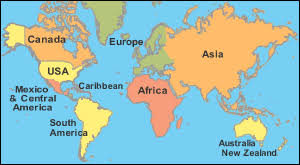International tourist numbers exceed 1,087 million in 2013

Madrid : International tourist arrivals grew by 5% in 2013, reaching a record 1,087 million arrivals, according to the latest UNWTO World Tourism Barometer. Despite global economic challenges, international tourism results were well above expectations, with an additional 52 million international tourists travelling the world in 2013.
Demand for international tourism was strongest for destinations in Asia and the Pacific (+6%), Africa (+6%) and Europe (+5%). The leading sub-regions were South-East Asia (+10%), Central and Eastern Europe (+7%), Southern and Mediterranean Europe (+6%) and North Africa (+6%).
“2013 was an excellent year for international tourism” said UNWTO Secretary-General, Taleb Rifai. “The tourism sector has shown a remarkable capacity to adjust to the changing market conditions, fuelling growth and job creation around the world, despite the lingering economic and geopolitical challenges. Indeed, tourism has been among the few sectors generating positive news for many economies”, he added.
UNWTO forecasts international arrivals to increase by 4% to 4.5% in 2014, again above its long-term forecast of +3.8% per year between 2010 and 2020. The UNWTO Confidence Index, based on the feedback from over 300 experts worldwide, confirms this outlook with prospects for 2014 higher than in previous years.
“The positive results of 2013, and the expected global economic improvement in 2014, set the scene for another positive year for international tourism. Against this backdrop, UNWTO calls upon national governments to increasingly set up national strategies that support the sector and to deliver on their commitment to fair and sustainable growth”, added Mr Rifai.
2014 regional prospects are strongest for Asia and the Pacific (+5% to +6%) and Africa (+4% to +6%), followed by Europe and the Americas (both +3% to +4%). In the Middle East (0% to +5%) prospects are positive yet volatile.
Europe welcomes most of the new arrivals
Europe led growth in absolute terms, welcoming an additional 29 million international tourist arrivals in 2013, raising the total to 563 million. Growth (+5%) exceeded the forecast for 2013 and is double the region’s average for the period 2005-2012 (+2.5% a year). This is particularly remarkable in view of the regional economic situation and as it follows an already robust 2011 and 2012. By sub-region, Central and Eastern Europe (+7%) and Southern Mediterranean Europe (+6%) experienced the best results.
In relative terms, growth was strongest in Asia and the Pacific (+6%), where the number of international tourists grew by 14 million to reach 248 million. South-East Asia (+10%) was the best performing sub-region, while growth was comparatively more moderate in South Asia (+5%), Oceania and North-East Asia (+4% each).
The Americas (+4%) saw an increase of six million arrivals, reaching a total of 169 million. Leading growth were destinations in North and Central America (+4% each), while South America (+2%) and the Caribbean (+1%) showed some slowdown as compared to 2012.
Africa (+6%) attracted three million additional arrivals, reaching a new record of 56 million, reflecting the on-going rebound in North Africa (+6%) and the sustained growth of Sub-Saharan destinations (+5%). Results in the Middle East (+0% at 52 million) were rather mixed and volatile.
Russia and China – leading in growth in 2013
Among the ten most important source markets in the world, Russia and China clearly stand out. China, which became the largest outbound market in 2012 with an expenditure of US$ 102 billion, saw an increase in expenditure of 28% in the first three quarters of 2013. The Russian Federation, the 5th largest outbound market, reported 26% growth through September.
The performance of key advanced economy source markets was comparatively more modest. France (+6%) recovered from a weak 2012 and the United States, the United Kingdom, Canada and Australia all grew at 3%. In contrast, Germany, Japan and Italy reported declines in outbound expenditure.
Other emerging markets with substantial growth in outbound expenditure were Turkey (+24%), Qatar (+18%), Philippines (+18%), Kuwait (+15%), Indonesia (+15%), Ukraine (+15%) and Brazil (+14%).














